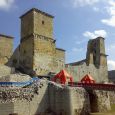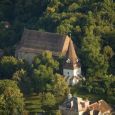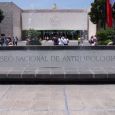Miskolc
Advertisement
By Bus
Since Miskolc is well connected to the rest of the country by railway lines, there are fewer bus lines connecting Miskolc to other cities. See this page: [2] on information on buses. Unfortunately it's available in Hungarian only. Here are the words you need to know to use it: "honnan": from (enter the city where you are), "hova": to (enter destination), "keresztül": through, "mikor": when (year-month-day), "keresés": search (click on it after entering parameters.) Now you get a page detailing time of departure, time of arrival and length of journey.
By Train
The main railway station is Tiszai Station (Tiszai pályaudvar in Hungarian.) The trains going through Northern Hungary all stop in Miskolc, the city can be reached by train from all the major cities (although if you come from the Transdanubian region, you might have to change trains in Budapest which means you have to find your way through the city to the Keleti station.)
See the website of Hungary State Railways for information on trains, travel time and prices. The site is available in Hungarian, English and German (this link leads to the English version.)
You should try to take the Intercity trains, they're much cleaner than regular and international trains, they don't stop at every small town and a seat is reserved for you. Intercity trains are a bit more expensive and it's better to reserve your seat days before the travel, because they are usually full.
Advertisement
Diosgyor Castle
To the west of Miskolc town center lies the district of Diósgyor, the industrial quarter and site of the iron works, the giant machine tool factory and other large concerns. The state co-operative organizations such as the Cultural Centre and Uránia Observatory are also to be found here. However, the impressive castle ruins are Diósgyor's main attraction.
It was probably the invading Magyars who erected a fortress on the site of the present castle. This was destroyed by the Mongols in 1241. In 1271 Ban Ernye of Ákos had an oval-shaped stone castle built on this raised site. After it had passed into the possession of the throne in 1340, King Louis had the present castle built; modeled on those found in southern Italy, it is flanked by four towers and is protected by an outer ring of fortifications. After King Sigismund had given it to his queen to be used as a summer -residence it became the practice for each successive queen to reside there. In the second half of the 15th C, Queen Beatrix of Aragon, wife of King Matthias, furnished it in luxurious Early Renaissance style. All that remains of these furnishings is the Diósgyor Madonna, probably part of an altar from the castle chapel and the work of the Dalmatian artist Johannes Duknovich de Tragurio, who also carried out work in other royal palaces. In the 16th C there were several changes of ownership, and additional fortifications were added, such as the round bastion in the northeast and the pentagonal one in the northwest. During the 16th C the castle gradually fell into decay, and in 1678 it was blown up by Habsburg troops. During the 19th C the debris was used as building rubble. Since 1968 the outer foundations have again been uncovered and parts of the inner fortifications reconstructed.
As a result it is now possible to see the size of the great Knights' Hall in the north wing and the castle chapel in the east wing. Three of the four corner towers have been reconstructed, and in the southwest tower (where there is a viewing platform) the Late Gothic vaulting of the corner room has been rebuilt. Some of the stone-masonry and other castle finds are on display in the castle museum in the northeast bastion.
Miskolc Reformed Church
The walk to Mount Avas southwest of the town center takes the visitor past the Reformed Church on the northern slopes of Kis Avas (Little Avas). Founded in the 13th C, it is the oldest building in Miskolc. Following renovation in 1470-90 it was given the form of a three-storied Gothic church with an ambulatory in the choir. Destroyed by fire, it was rebuilt between 1560 and 1569 as the Church of the Reformed Congregation; the Gothic columns were encased and the vaulted ceiling replaced by a wooden one. The Renaissance pews in the choir were probably brought here from the chapel of Diósgyor Castle. A particular feature of the church is the separate bell-tower (1557) with its stocky, stone base, wooden gallery and pointed, shingle-covered helm roof.
Minorite Church
By way of Széchenyi utca, past the National Theatre and then through Déryné utca, the visitor will come to the Baroque church on Hosök tér (Heroes' Square). It is the work of the Italian architect Giovanni Battista Carlone (1682-1747), whose studio was in Eger. The church was built between 1729 and 1734; two towers flank the gable end with a figure of the Virgin Mary in the center and statues of saints on either side. Frescos showing scenes from Mary's life adorn the interior.
Mount Avas
There are large numbers of old cellars going down 10-20m (33-66ft) (in one case as deep as 100m (330ft) into Mount Avas, the local mountain, which stands 243m (800ft) high. A fine panoramic view can be enjoyed from the viewing tower on the mountain peak.
Szenchenyi utca
This busy shopping street, now pedestrianized, is the traditional center of Miskolc. The street is dominated mainly by 19th C buildings, interspersed with a number of pretty Baroque houses and quite a few attractive new buildings.
June - November
July - August -> 26(°C) - Summer
January - February -> 0(°C) - Spring
Advertisement








